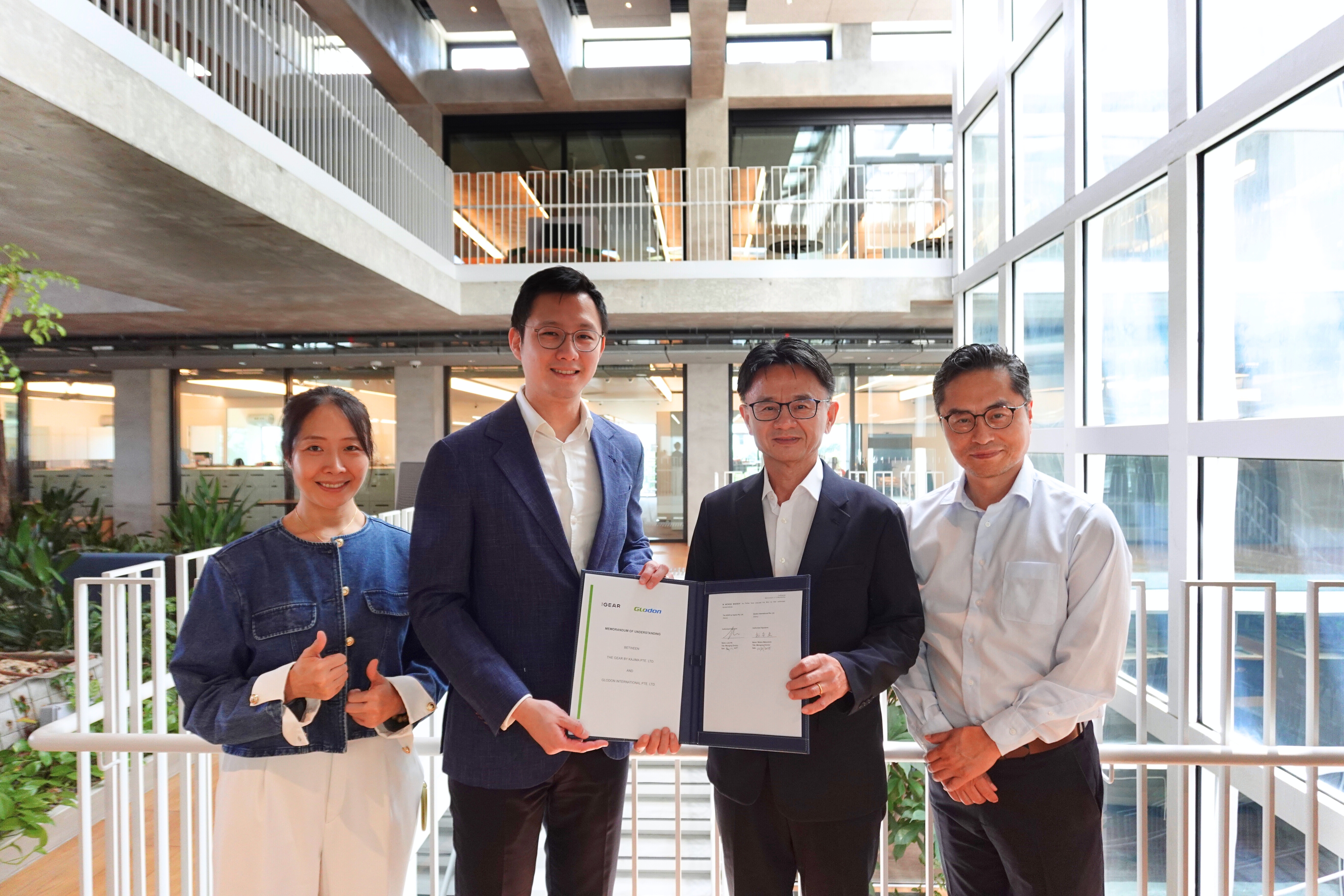October 16.2025
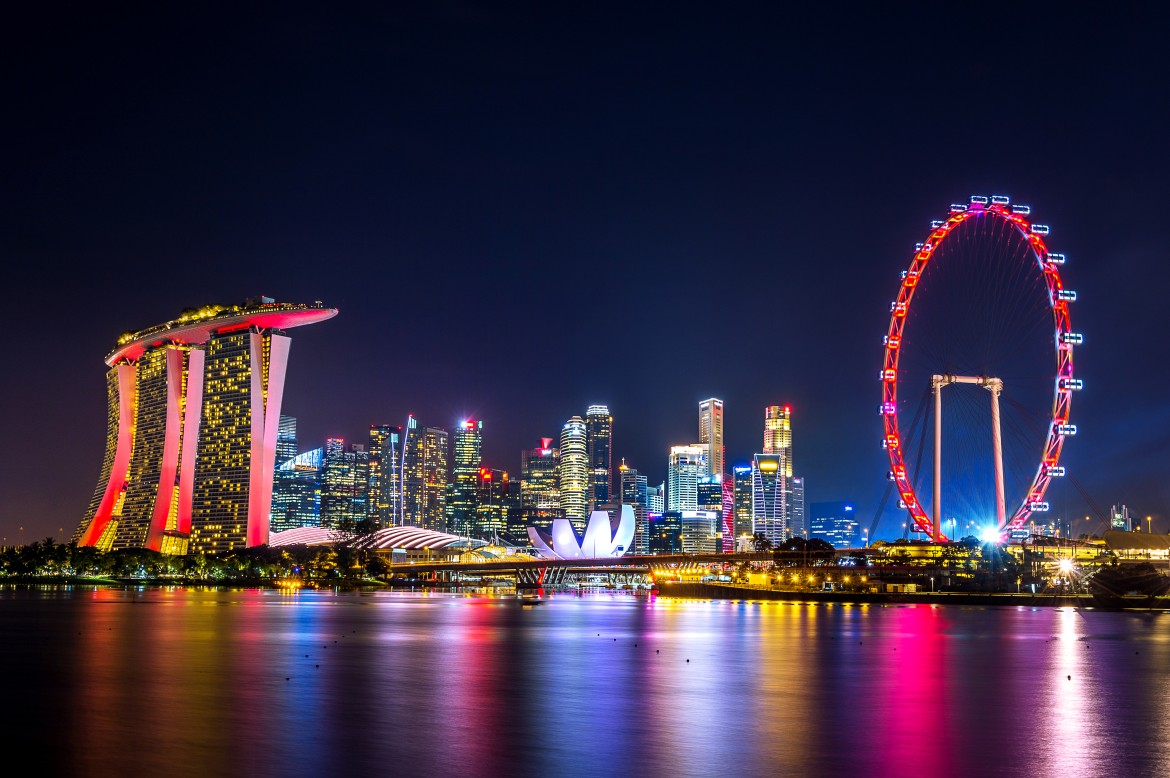
Singapore’s skyline is more than a visual marvel. It reflects the city’s evolution from a colonial port to a global hub of innovation and sustainability. Every building, bridge, and park reveals a thoughtful balance of design, function, and environment.
From early shophouses built for climate and commerce to today’s futuristic icons like Marina Bay Sands and Gardens by the Bay, architecture in Singapore has always been shaped by purpose. What sets it apart today is the city’s commitment to blending dense urban living with green spaces, cultural heritage, and engineering precision.
This article explores how Singapore architecture reflects a city that builds with intention, adapts to its tropical climate, and continually looks toward the future.
Singapore Architecture Foundations: From Colonial Past to Modern Identity
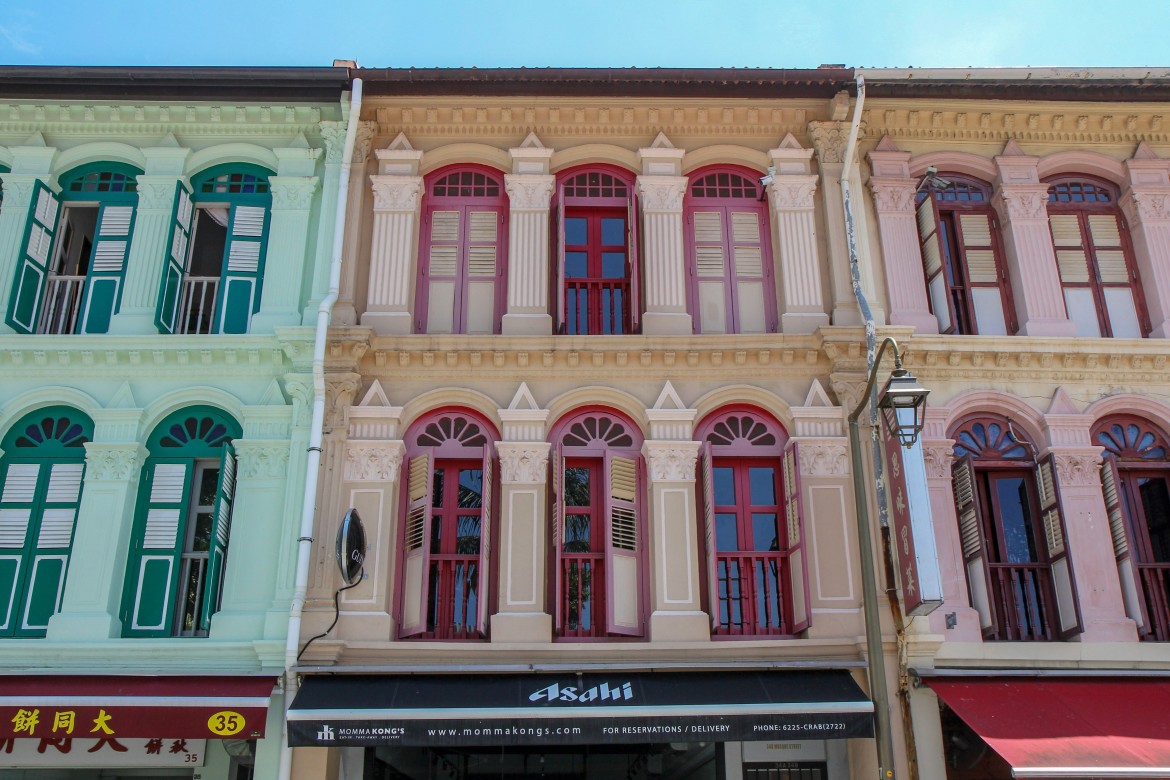
Singapore’s built environment has long reflected its cultural intersections. During the colonial period, British architects introduced neoclassical and Victorian styles in civic buildings such as the Old Parliament House and the National Gallery. These designs were adapted to the tropical climate with deep verandas, timber shutters, and high ceilings for ventilation, which are early examples of climate-responsive Singapore architecture.
Shophouses, with their narrow layouts and colorful facades, blended Chinese, Malay, and European styles. Many of these shophouses have been preserved and repurposed, showcasing how heritage architecture in Singapore remains relevant in a modern city.
By the mid-20th century, as Singapore industrialized and gained independence, architectural priorities shifted. The Housing and Development Board (HDB) introduced large-scale public housing, favoring function and affordability. Over time, the architecture of Singapore evolved, embracing design innovation, sustainability, and a distinctly Singaporean identity.
Innovative Singapore Architecture for a Sustainable Future
Land scarcity, a humid climate, and a vision for long-term sustainability have shaped how Singapore architecture has evolved. Here, buildings are more than structures, they are part of an ecosystem designed for efficiency and comfort.
This commitment to sustainability is evident across the skyline, from energy-efficient skyscrapers to green public spaces. As billionBricks notes in its overview of Singapore’s sustainable architecture, the city’s built environment continues to lead global conversations on resilient, climate-conscious design.
Many new developments combine multiple uses. High-rise residences include retail, transit access, and green spaces in a single structure. Public buildings prioritize airflow, shade, and openness. Each design choice responds directly to the environment.
The Urban Redevelopment Authority (URA) plays a central role in shaping the future of the architecture of Singapore, guided by long-term master planning and land-use policies. Similarly, the Building and Construction Authority (BCA) promotes green building standards through its Green Mark certification, ensuring energy efficiency and environmental responsibility across new projects.
Marina Bay Sands: An Icon of Engineering and Vision
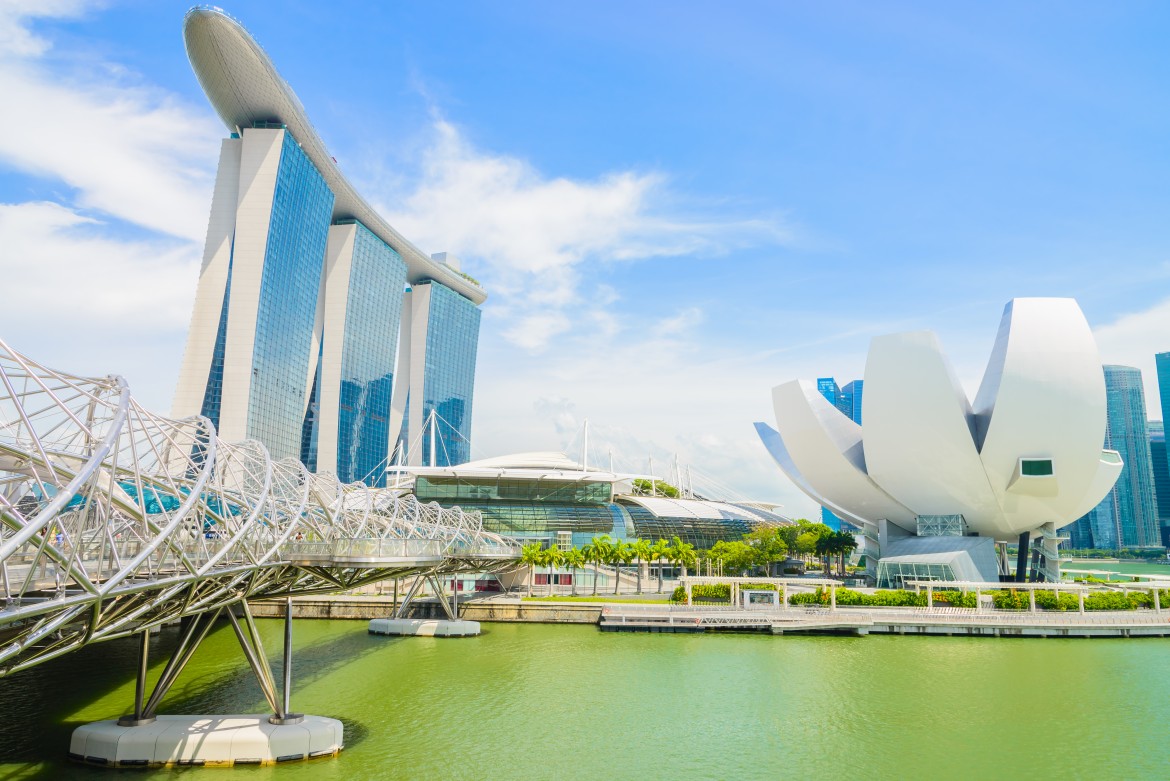
Few buildings embody the ambition and complexity of Singapore’s architectural ambitions like Marina Bay Sands. Designed by architect Moshe Safdie and completed in 2010, the structure is now a global icon. The structure’s distinctive silhouette, with three 55-story hotel towers crowned by the SkyPark, defines Singapore’s skyline and showcases how Singapore architecture blends creativity with structural precision.
The engineering behind Marina Bay Sands was as challenging as its concept. Built on reclaimed land, the towers required deep foundation systems to ensure long-term stability. Each tower moves independently due to wind and load factors, yet the SkyPark spans across all three. This demanded the use of expansion joints and high-precision structural balancing.
Beyond the spectacle, Marina Bay Sands exemplifies integrated urban development. The complex combines hospitality, entertainment, retail, and cultural spaces in one continuous structure, a hallmark of the architectural design of Singapore’s multi-functional design philosophy.
Gardens by the Bay: Nature and Architecture in Harmony
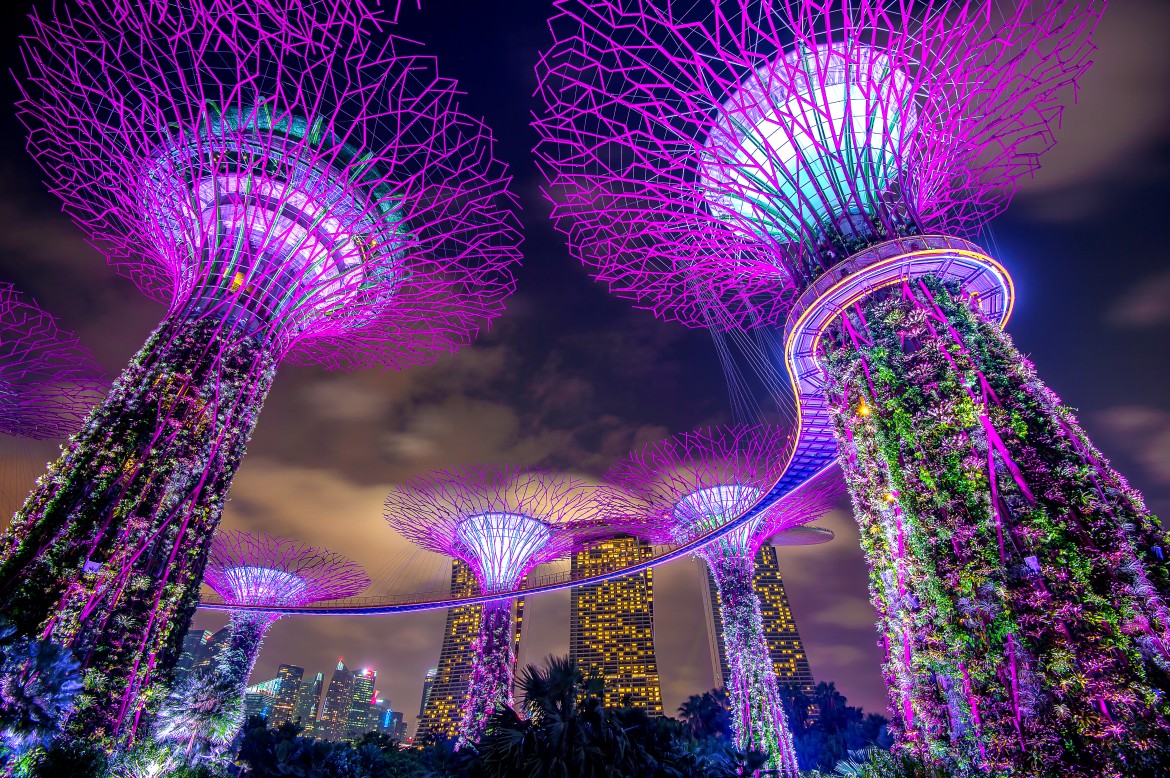
Opposite Marina Bay Sands lies Gardens by the Bay, a true masterpiece of sustainable Singapore architecture design. This 101-hectare park embodies Singapore’s “City in a Garden” vision. Its Supertrees, ranging from 25 to 50 meters tall, are more than sculptural. They support vertical gardens, generate solar power, and aid in air circulation.
The park’s two conservatories, the Flower Dome and Cloud Forest, use climate-controlled glass architecture to host diverse ecosystems. Designed by WilkinsonEyre, these structures use energy-efficient systems to cool the interior while minimizing environmental impact.
Rainwater is collected, horticultural waste is converted into energy, and smart glazing systems regulate temperature and light. Here, architecture becomes part of an ecosystem, not separate from it.
More Architectural Marvels Shaping Singapore’s Skyline
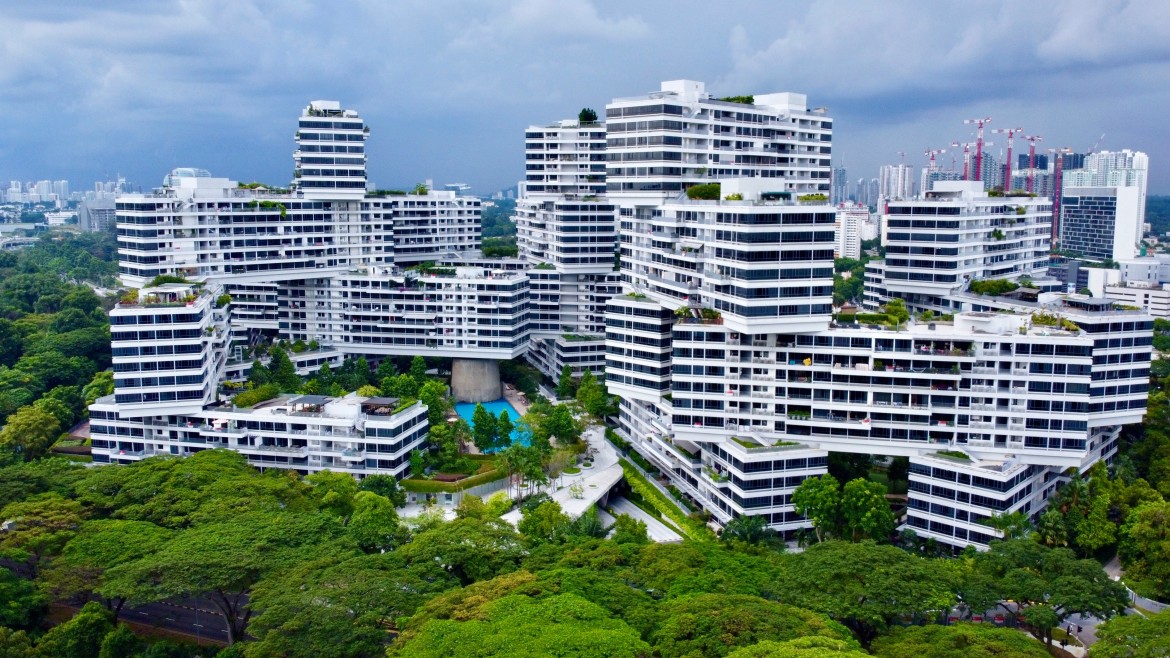
Across the city, Singapore architecture continues to push creative and technical boundaries.
The Interlace, designed by Ole Scheeren, breaks away from the typical vertical tower format. It features 31 stacked blocks arranged hexagonally to form interconnected courtyards and communal spaces. This approach maximizes airflow, natural light, and social interaction.
Jewel Changi Airport, with its massive glass dome, 40-meter indoor waterfall, and lush forest valley, has redefined what airport architecture can offer. It serves as both a transport hub and a public park, illustrating the city’s emphasis on dual-purpose design.
Other landmarks like the Helix Bridge, inspired by the geometry of DNA, and the futuristic Esplanade – Theatres on the Bay, known for its spiky “durian” shape, highlight the city’s openness to experimental forms.
Even Singapore’s public housing has embraced architectural innovation. Newer HDB developments now incorporate vertical greenery, sky gardens, solar panels, and pedestrian-friendly layouts, showing that high-density housing can be both functional and uplifting.
Sustainability and Green Engineering in Singapore Architecture
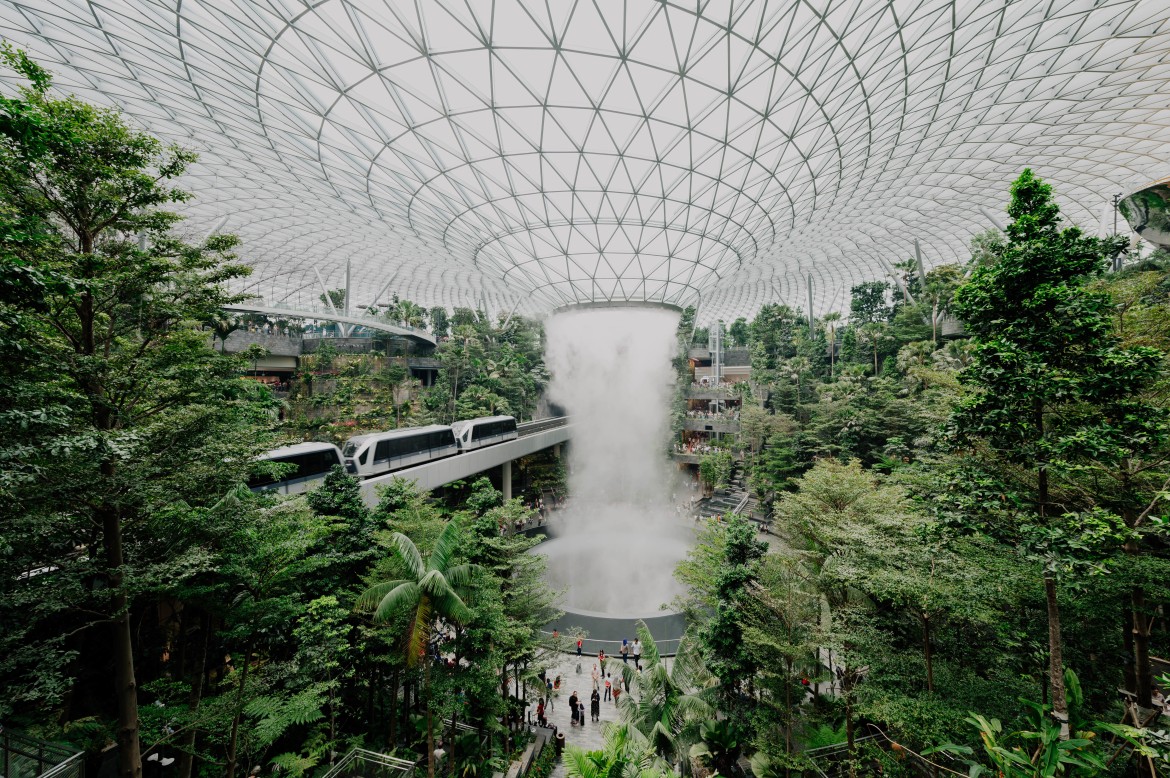
Sustainability in Singapore architecture is deeply embedded. Most new developments seek Green Mark certification, from the Building and Construction Authority (BCA), ensuring projects meet high standards of energy efficiency and environmental stewardship.
Common features include:
1. Green roofs and vertical gardens
2. Rainwater collection systems
3. Solar panels and photovoltaic integration
4. Recycled or low-impact building materials
5. Smart energy monitoring systems
To achieve these goals, digital tools like Building Information Modeling (BIM) are increasingly crucial. BIM enables architects and engineers to simulate performance, optimize resources, and minimize waste throughout the project lifecycle. For a deeper look at how technology supports sustainable design, check out our article on how BIM is driving sustainability in mega projects.
Projects like Gardens by the Bay and Marina Bay Sands demonstrate that sustainable Singapore architecture is not a trend, but a long-term national strategy. By combining technology, nature, and human comfort, Singapore continues to redefine urban living for future generations.
Why Singapore Architecture Continues to Inspire
What truly distinguishes Singapore architecture is its ability to balance vision with practicality. Each building, whether it’s a cultural landmark or public housing project, contributes to a cohesive city ecosystem where design serves people and the planet alike.
The URA and BCA have been pivotal in shaping this progress, fostering collaboration between architects, engineers, and policymakers to ensure every project aligns with the country’s sustainable development goals.
In conclusion, Singapore architecture stands as a remarkable story of transformation, from colonial heritage to a global symbol of sustainability and innovation. The city’s commitment to integrating nature, technology, and community in every design sets it apart as a living model of urban excellence.
As Singapore looks toward the future, its architecture will continue to evolve, embracing digital innovation, environmental consciousness, and cultural inclusivity. For designers and city planners worldwide, Singapore architecture remains an inspiring example of how vision and structure can come together to create a city that truly lives in harmony with its people and its planet.




